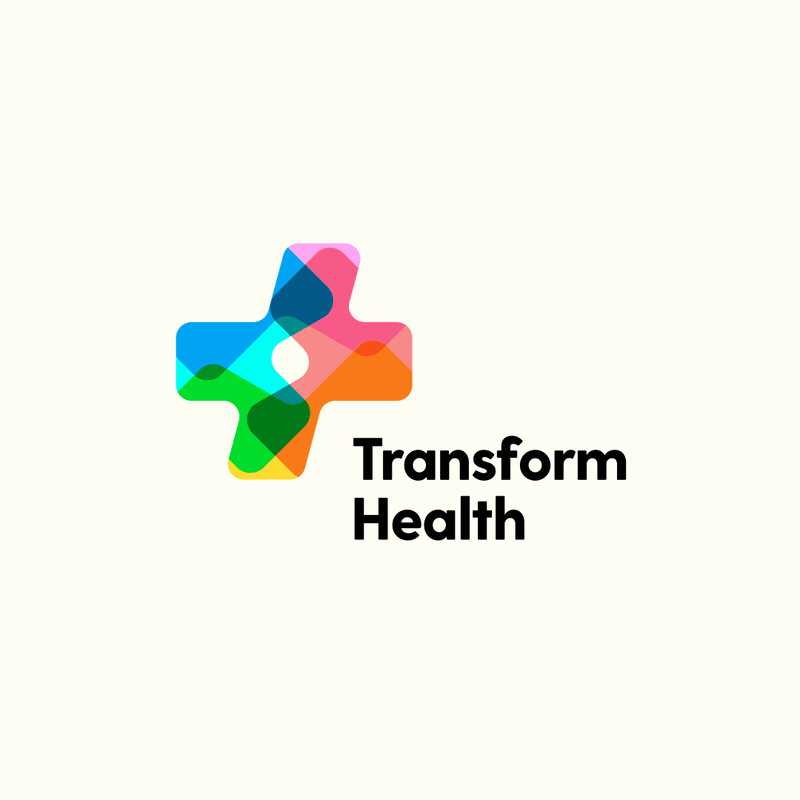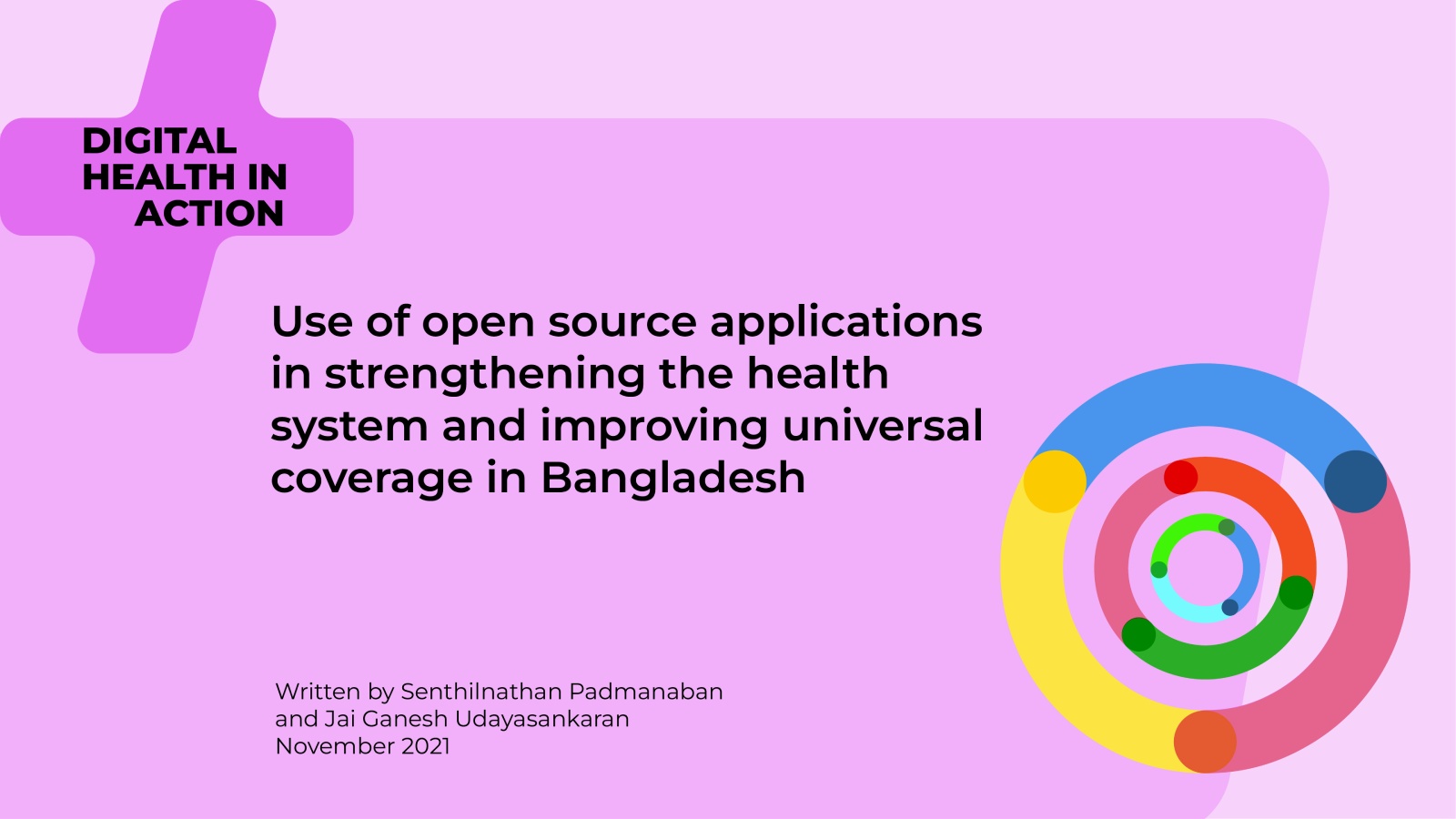Use of open source applications in strengthening the health system and improving universal coverage in Bangladesh
Bangladesh’s approach of digitising the healthcare system using free-to-use open-source software and applications is a valuable example for low-and-middle-income countries with budget constraints for developing and expanding digital health programmes.
Bangladesh is a young nation formed in 1971. Driven by ‘Vision 2021’, an articulation of where the country needs to be by its 50th anniversary, Bangladesh has achieved remarkable health care improvements in the last two decades. With the goal of transforming Bangladesh into a middle-income country devoid of poverty, Vision 2021 (conceptualised in 2008) also imbibes the goals of providing universal access to healthcare and digitising the country through the motivating idea of ‘Digital Bangladesh by 2021’ – a call to action to mainstream information technology in all areas of the society including health care.
Like most low- and middle-income countries, the health system in Bangladesh is fragmented and pluralistic, and the information system was in silos. The government health system followed a paper-based system and timely data was not always available. Also, the system presented substantial data quality issues. Thus, the country presented a clear need for a routine health information system. Moreover, as the country undertook health system strengthening for universal health coverage, improved governance and evidence-based decision-making were imminent.
The MIS unit within the Ministry of Health and Social Welfare (MoHFW) started the groundwork for digitising healthcare in 2009. The initiative stemmed from the assessment of the Health Information System (HIS) status in Bangladesh conducted jointly by the MoHFW and WHO’s Health Metrics Network. The assessment laid the foundation for defining the need for improving HIS in the country. Also, Bangladesh launched the Health, Nutrition, and Population Sector Programme (HNPSP) in 2008, and later in the same year, the Government of Bangladesh introduced the vision of Digital Bangladesh by 2021.
After that, the country witnessed a sudden spurt in digital adoption in health with multiple solutions implemented at various levels. Despite the spurt, the HIS in the country remained fragmented. Combined with the country’s lack of IT infrastructure, poor IT skills among staff, high cost of developing a home-grown software solution, and limited financial resources, DHIS2, a free open source interoperable and scalable solution, was identified as the best bet for the country’s health system woes. A memorandum of understanding was signed between the Health Information System Program (HISP), India. As per the MoU, HISP India will be providing technical support in developing a national data warehouse and customising and implementing DHIS2 across the country.
Within two years of implementation, the honorable prime minister of Bangladesh was honored with the 2011 United Nations “Digital Health for Digital Development” award. In the next ten years, Bangladesh became the largest DHIS2 deployer globally, connecting the entire health system and ensuring that quality data is available for decision-making at levels.
The reporting rate from the community health level increased from 10 per cent in 2014 to 98 per cent by 2018. Over the years, multiple data sets were integrated into the national data warehouse. As of 2018, 70 data sets on information from all the health system levels have been integrated. The implementation of DHIS2 was also extended beyond the Ministry of Health to establishments and programs managed by other ministries and by NGOs and
private organisations. Thus, the ten-year progressive journey of DHIS2 implementation in the country ended with a remarkable output wherein the decision-makers at all levels have visibility to an online dashboard in one click, in real-time. In addition to the DHIS2 analytics tools, the dashboard also uses other business intelligence tools such as Tableau, Jaspersoft, Google Chart, and High-Charts for analysis and visualisation.
private organisations. Thus, the ten-year progressive journey of DHIS2 implementation in the country ended with a remarkable output wherein the decision-makers at all levels have visibility to an online dashboard in one click, in real-time. In addition to the DHIS2 analytics tools, the dashboard also uses other business intelligence tools such as Tableau, Jaspersoft, Google Chart, and High-Charts for analysis and visualisation.
The introduction of DHIS2 also catalysed the prioritisation of data standardisation and interoperability in health care. A draft guideline on the health informatics standards and data structure for Bangladesh were developed by MIS-DGHS to define standards and interoperability procedures for existing and future database systems under MoHFW, other ministries, nongovernmental organisations, development partners, and the private sector.
Alongside, the country is implementing an ambitious shared health record (SHR) to create a national electronic archive for patients to access medical records anywhere, anytime. Like DHIS2, the country has chosen OpenMRS, an open-source electronic medical record (EMR) solution. The Bangladeshi version, OpenMRS+, consists of modules from OpenMRS, a national electronic medical record system, OpenELIS, an open enterprise laboratory information
system, and dcm4chee, an image manager. The OpenMRS+ is integrated into the SHR system enabling health information exchange in transporting patients’ EMR to and from the central repository where updated information is stored. Health facilities (both private and public) are encouraged to take a free copy of the software and join the national health facility automation system network.
system, and dcm4chee, an image manager. The OpenMRS+ is integrated into the SHR system enabling health information exchange in transporting patients’ EMR to and from the central repository where updated information is stored. Health facilities (both private and public) are encouraged to take a free copy of the software and join the national health facility automation system network.
In 2015, the government launched its National Telehealth Service – Shastho Batayon 16263, which is linked to the existing health system and caters to the health care needs of people anytime. Other than teleconsultation services, the platform also offers services such as reserving ambulances, providing health information, receiving and resolving complaints about public health sector facilities, and coordinating emergency health responses. A person can dial the number 16263 from any telephone connection to use the services. The service received over 10 million calls between March 2008 and August 2020, and 83 per cent were COVID-related.
These multiple programmes and e-initiatives are now interlinked in the country. Their performance can be verified through a real-time health information dashboard managed by the office of the Director-General of Health Services.
Key lesson:
● Using free-to-use open-source software/applications can enable low-and-middle-income countries with budget constraints to effectively develop and expand digital health programmes.
References:
1. Health System Strengthening: Transforming the health information system in Bangladesh through the implementation of DHIS2; UNICEF; https://www.unicef.org/rosa/media/3416/file/A%20Case%20Study%20Bangladesh%20Online.pdf
2. Muhammad Abdul Hannan Khan, Valeria de Oliveira Cruz, Abul Kalam Azad; Bangladesh’s digital health journey: reflections on a decade of quiet revolution; https://www.who-seajph.org/temp/WHOSouth-EastAsiaJPublicHealth8271-794121_021221.pdf
3. Bangladesh health information dashboard http://dashboard.dghs.gov.bd/webportal/pages/index.php


